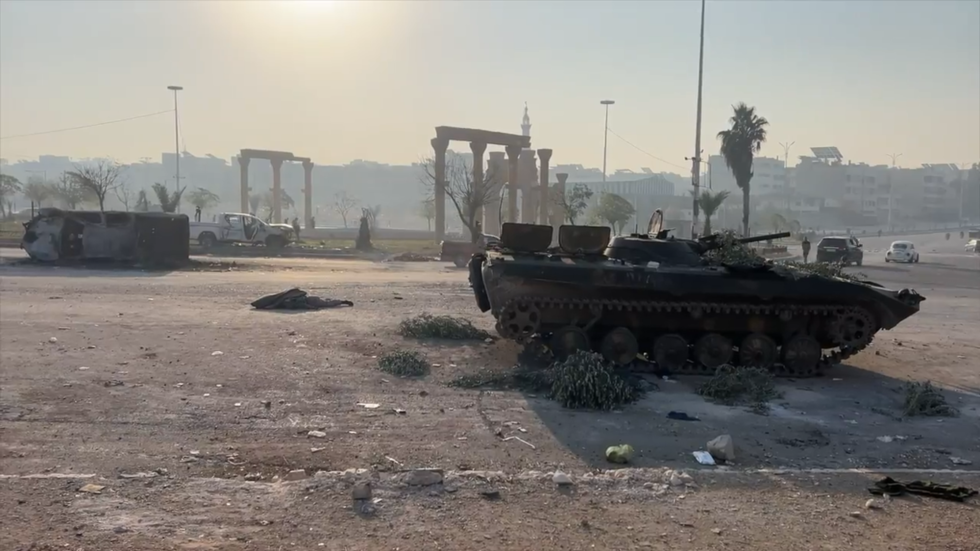On Thursday, government forces in Syria announced their withdrawal from the city of Hama amid a surprising offensive by the terrorist group Hayat Tahrir al-Sham (HTS). This decision followed several days of intense combat, prompting the military to prioritize civilian safety by retreating rather than risking further casualties among the local population. Despite the withdrawal, the Syrian military claimed that HTS suffered heavy losses during their advance. Social media footage captured the moment when militants, formerly known as Jabhat al-Nusra, entered the city, showcasing celebrations that included gunfire and displays of military hardware left behind by government troops, set against a backdrop of cheers from some local residents.
The HTS offensive extended beyond Hama, originating from the northern province of Idlib, and took the Syrian military by surprise, who could only watch as the militants swiftly overran Aleppo, the country’s second largest city. The rapid gains by HTS highlight the precarious situation for the Syrian government, which has struggled against insurgent forces despite support from Russian military operations that have been ongoing since 2015. Moscow has actively participated in targeting HTS positions and had previously reported significant casualties among the militants, indicating a continuous struggle for control over key regions in Syria amid shifting battle dynamics.
As the offensive unfolds, the United Nations has reported a significant humanitarian crisis, with around 280,000 people displaced due to the recent violence. The situation is rapidly deteriorating, with the World Food Program’s emergency coordinator, Samer AbdelJaber, warning that the number of individuals fleeing could rise dramatically to as much as 1.5 million. This alarming displacement scenario underscores the dire conditions faced by civilians caught in the crossfire of conflict and emphasizes the urgent need for humanitarian assistance to vulnerable populations affected by the turmoil.
The strategic importance of Hama cannot be understated; it lies centrally on the vital Aleppo-Damascus highway, making it a critical juncture for transportation and supply routes. The loss of this city threatens to consolidate militant control in the region, impacting not just the military landscape but also everyday life for its near one million inhabitants. The destabilization of this area raises questions about the broader implications for both Syrian governance and the capability of international responders to address the emerging crisis effectively.
The recent advancements by HTS could indicate a renewed vigor in jihadist operations within Syria, as the group capitalizes on perceived weaknesses in the Syrian military’s defensive capabilities. As military analysts and foreign governments, including Russia, assess the situation, they are faced with complex decisions about engaging more deeply in the conflict or reassessing their strategic interests in the region. The visible impact of HTS’s offensive underscores the shifting allegiances and power dynamics that have characterized the Syrian civil war since its onset.
In summary, the developments in Hama represent a critical turning point in the Syrian conflict, signaling both a humanitarian crisis and a strategic setback for government forces. The situation remains fluid, with potential repercussions for regional stability and international relations. Understanding the evolving dynamics of power, the response of various actors, and the growing humanitarian needs will be essential in navigating the complexities of ongoing conflict in Syria.

